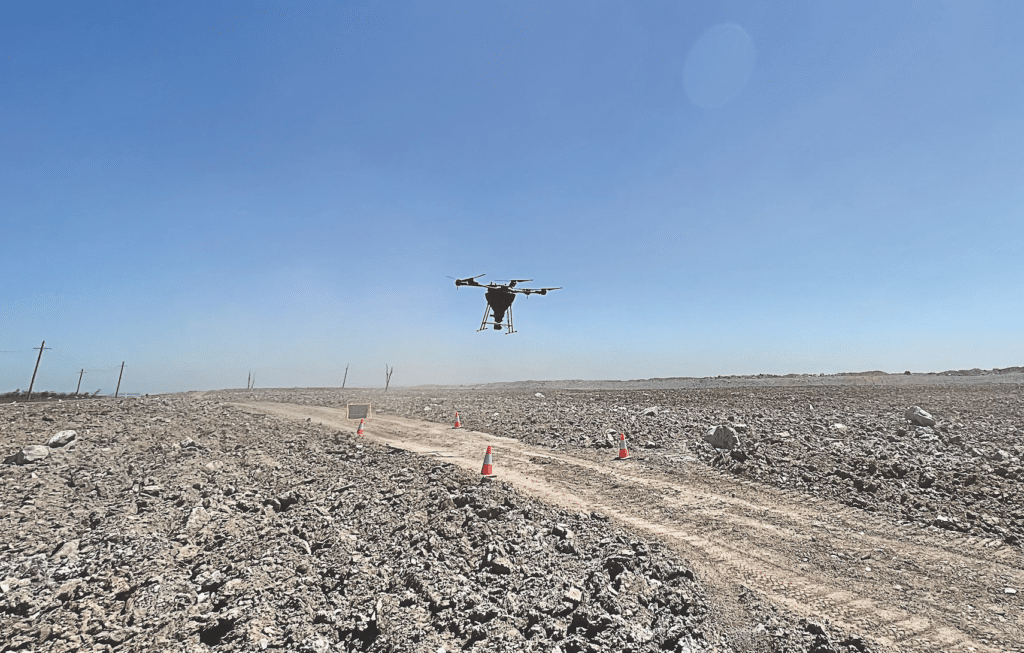A mini solution for a major industry
Movex’s MINIDOZER may have big implications for the Australian mining sector.
When thinking about a mine site, one could be forgiven for simply picturing giant haul trucks and massive crushers.
But the dynamic world of Australian mining often requires smaller solutions for bigger challenges as operations move towards a greener future.
Hasemer Material Handling has been a trusted supplier of quality lifting and material handling equipment for the Australian mining industry since 1965.
With decades of experience under its belt and customers across Australia and New Zealand, Hasemer is well versed on the challenges facing the sector as net-zero targets approach.
The company is now bringing a different kind of solution to Australian shores with the help of its Canadian-based partner, Movex Innovation.
As an established industry innovator, Movex boasts a network of mining equipment across a range of operations in more than 30 countries.
Hasemer managing director Stephen Batten has seen first-hand the benefits Movex equipment can have in Australian operations.
“Movex’s innovation is driven by a commitment to listening to its customers, with the company always coming out with new products to suit their unique needs,” he said.
The latest Movex MINIDOZER is no exception to this principle.
With a low-profile design for confined areas, the MINIDOZER is purpose-built for tough applications like cleaning potlines in aluminium smelters or underneath conveyor belts in ore-processing plants.
These environments are traditionally extremely dangerous areas for workers, with operations needing to be shut down while workers perform cleaning and recovery.
But the MINIDOZER takes the human element out of the process, boosting site safety and slashing downtime by allowing operations to keep running while it works. Batten said Hasemer has already implemented Movex’s machines at Australian operations with resounding success.
“At one aluminium smelter specifically, we have been able to work with Movex and our customer to customise the MINIDOZER to their unique specifications,” he said. “One mining contractor told us the MINIDOZER actually saved them a person on the job.”
But the ultra-compact loader doesn’t just have the potential to keep operations running; it can also keep workers out of harm’s way.
Movex business development director William Lavoie said the MINIDOZER can also help operators reach their sustainability goals.
“The confines of certain operations demand ultra-compact material-handling equipment, and not just any equipment will do,” Lavoie told Australian Mining.
“In aluminium smelters, especially, equipment must be robust against magnetic fields, but we must accommodate a client’s needs and consider all operating environments.
“Being electric-powered while having diesel power strength, the MINIDOZER also eliminates emissions and cuts fuel costs.”
With nearly 100m of remote control range, the MINIDOZER is designed to work in harsh environments and go where others can’t.
Lavoie emphasised that not only can the MINIDOZER save operators on downtime, maintenance and overall costs by only requiring simple battery changes, but it’s also an easy-to-use solution anyone can operate.
“While the MINIDOZER uses smart and advanced technology, we engineered it so it can be used by anyone,” he said. “It doesn’t require any licencing either; it really is a simple solution.”
It’s a simple solution Batten is confident will have a major impact in the Australian mining sector.
“Hasemer and Movex alike prioritise quality products and services for our customers,” he said.
“The MINIDOZER is the latest realisation of our shared commitment to solving the challenges our customers face.”
Source: https://www.australianmining.com.au/a-mini-solution-for-a-major-industry/


Jobs in Mining Australia does not receive any funding to operate its business. All profits are used to improve the service we offer to Jobseekers.
USEFUL LINKS
FOLLOW US
STAY INFORMED
You need a helping hand with your project?
We will get back to you as soon as possible
Please try again later
CONTACT US
Contact Us
We will get back to you as soon as possible.
Please try again later.
All Rights Reserved | Jobs In Mining Australia
Powered with 💛 by Shazamme
